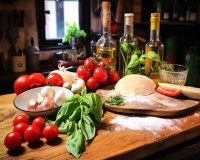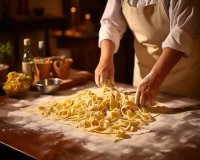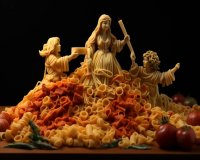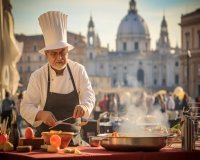Pasta & Tiramisu: Culinary Combo
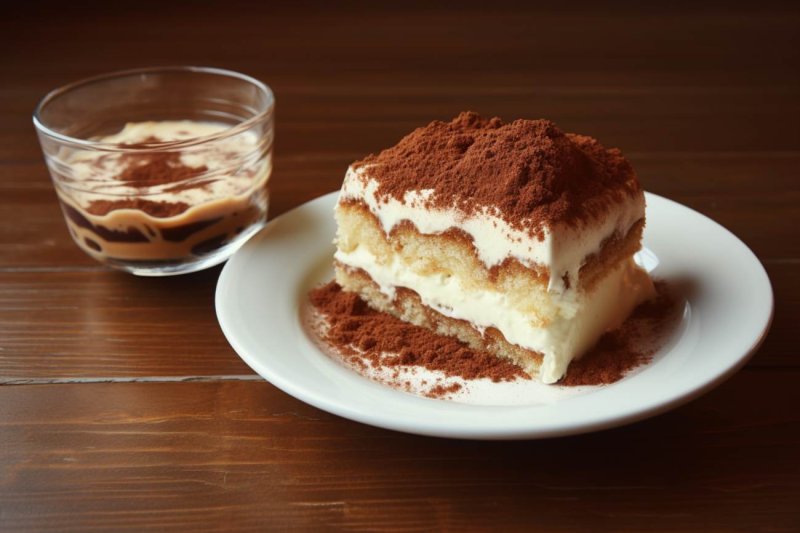
Why Tiramisu and Pasta Make the Perfect Pair in Rome
When you think of Rome, the first thing that likely comes to mind is the rich history, stunning architecture, and of course, the delectable Italian cuisine. While pasta and tiramisu are undoubtedly two of Italy's culinary treasures on their own, they become a match made in heaven when savored together in the heart of Rome.
Let's delve into the reasons why this combination of creamy dessert and savory pasta is simply irresistible in the eternal city.
The Origins of Tiramisu
Before we explore the delightful synergy between tiramisu and pasta, it's essential to understand the origins of this beloved dessert. Tiramisu, which translates to "pick me up" in Italian, is believed to have been created in the Veneto region of Italy. Its coffee-soaked ladyfingers, layered with mascarpone cheese, create a heavenly taste sensation. This elegant dessert eventually made its way to Rome, where it found a home among pasta lovers.
Exploring the Flavors
The magic begins when you combine the creamy sweetness of tiramisu with the hearty goodness of pasta. In Rome, the flavors harmonize to create a balance that is nothing short of extraordinary. The richness of the tiramisu complements the simplicity of traditional Roman pasta dishes, such as Cacio e Pepe, Carbonara, or Amatriciana.
Imagine savoring a plate of al dente spaghetti coated in a silky carbonara sauce, followed by a spoonful of tiramisu. The pasta's savory notes contrast beautifully with the tiramisu's sweetness, creating a culinary symphony that will make your taste buds sing.
The Role of Espresso
One of the secrets to the perfect pairing of tiramisu and pasta in Rome is the use of espresso. Italians are renowned for their espresso, and it's a key ingredient in tiramisu. The coffee-infused ladyfingers in tiramisu provide a wonderful caffeine kick that pairs exquisitely with the hearty pasta. It's not just a meal; it's an experience.
Endless Variations
One of the joys of enjoying tiramisu and pasta in Rome is the variety of options available. Whether you prefer a classic tiramisu with cocoa dusting or a more modern interpretation with flavored mascarpone, there's something for everyone. Similarly, Roman pasta dishes offer endless variations to suit your taste, whether you're a fan of pancetta, pecorino, or a vegetarian twist.
The Atmosphere
Rome's enchanting atmosphere also plays a crucial role in making tiramisu and pasta the perfect pair. Dining alfresco in a charming Roman trattoria, with historic buildings as your backdrop, enhances the experience. As you savor each bite, you can also soak in the city's rich culture and history, adding an extra layer of enjoyment to your meal.
Embracing Tradition
While Rome is a city that has evolved over millennia, it remains deeply rooted in tradition. This extends to its culinary culture. Both tiramisu and classic pasta dishes are prepared with respect for time-honored recipes. When you indulge in this combination, you are not just enjoying food; you are immersing yourself in centuries of culinary history.
In conclusion, there's something truly magical about the way tiramisu and pasta come together in Rome. The contrast of flavors, the role of espresso, the endless variety, the captivating atmosphere, and the embrace of tradition all contribute to making this pairing a gastronomic masterpiece. So, if you find yourself in the eternal city, be sure to savor the perfect pair that is tiramisu and pasta - it's an experience that will stay with you long after you've left Rome.
Rome: 3-in-1 Fettuccine, Ravioli and Tiramisu Cooking Class
Learn how to prepare some of Italy's most famous pasta dishes as well as a traditional Italian dessert at a workshop in the heart of Rome.
Highlights
- Learn how to prepare fresh Italian pasta and tiramisu
- Admire unique views of Piazza Navona
- Savor the rewards of your efforts after the class with a glass of wine
Impress your friends back home by learning how to prepare delicious Italian pasta and tiramisu during your time in Rome. Start your lesson by learning how to make a delicious tiramisu before proceeding to make two types of pasta, ravioli and fettuccine, from scratch. Master the art of preparing the perfect pasta dough and learn which fillings are best for each season from your expert chef teacher.
In the second half of the workshop, sit down to enjoy the fruits of your labor with a glass of wine very close to Piazza Navona. You will have the opportunity to taste your 2 pasta dishes, served with your choice of sauce and finished off with a plate of tiramisu.
Includes
- Cooking class
- Fettucine with chosen sauce
- Ravioli with butter and sage
- Tiramisu
- Glass of wine or soft drink
- Glass of Limoncello or coffee
- Water
The Surprising Flavor Synergy of Rome
When one thinks of Rome, the first images that come to mind are the Colosseum, the Vatican, and delicious pasta. But beyond these iconic landmarks, there's another hidden gem in the Eternal City that often goes unnoticed - the surprising flavor synergy that defines Roman cuisine.
Rome is not just the capital of Italy; it's the epicenter of a culinary adventure that spans centuries. The cuisine of Rome is as rich and varied as its history. It's a tantalizing blend of tradition and innovation, where the unexpected flavors and textures come together in a delightful culinary dance.
At the heart of this flavor synergy is the concept of 'Cucina Romana,' the Roman way of cooking. It's a cuisine that's firmly rooted in the past, yet continues to evolve. Here's a closer look at the elements that make the flavor of Rome so surprising and unique:
The Ingredients
Roman cuisine is characterized by its use of simple, fresh, and locally sourced ingredients. Tomatoes, olive oil, garlic, and basil are staples, and they form the basis of many dishes. But what truly sets Roman cuisine apart is the unexpected use of offal - the internal organs of animals like liver, tripe, and sweetbreads. While some may initially cringe at the thought, these ingredients are prepared in such a way that they become a delicacy, bringing a distinct flavor to the dishes.
The Pasta
When in Rome, you'll be surprised by the sheer variety of pasta shapes and flavors. From the classic carbonara to the unique cacio e pepe, Roman pasta dishes are known for their simplicity and yet, their depth of flavor. The surprising part is how such complex and delightful flavors can be created from so few ingredients.
The Pizza
While Naples may be the birthplace of pizza, Rome has its own unique take on this beloved dish. Roman pizza is characterized by its thin, crispy crust and creative toppings. The surprise lies in the variety of toppings you can find, from traditional margheritas to more unconventional combinations like potato and rosemary. The Roman pizzerias have truly mastered the art of surprising your taste buds.
The Gelato
No visit to Rome is complete without indulging in gelato. The surprise with Roman gelato is not just in the flavors but also in the texture. It's creamier and denser than regular ice cream, making each bite a delightful experience. Flavors range from the traditional pistachio and chocolate to the more unexpected fig and wine. The artistry and creativity that go into Roman gelato are simply astonishing.
The Wine
Rome is not only about food; it's also about wine. The surprising synergy between Roman dishes and the local wine is a match made in culinary heaven. From the crisp and refreshing Frascati to the full-bodied reds of Lazio, Roman wine complements the cuisine perfectly. There's an art to pairing wine with dishes that enhances the overall dining experience and makes it truly special.
In conclusion, Rome's cuisine is a delightful surprise for the senses. It's a place where the traditional meets the unexpected, and where flavors and textures combine in a way that's truly magical. The surprising flavor synergy of Rome is a testament to the city's rich history, its commitment to using fresh ingredients, and the creativity of its chefs. So, when in Rome, be prepared to be surprised and delighted by the culinary wonders that await you.
Rome: Pasta Cooking Class in the Kitchen of Mamma
Learn how to prepare homemade pasta like an Italian Mamma at an amazing cooking class in Rome. Go to the supermarket, learn with a local chef, and enjoy a leisurely lunch of the fruits of your labor.
Highlights
- Visit a local market to buy fresh ingredients
- Learn how to make pasta with the help of a chef
- Enjoy a leisurely lunch, served with a glass of local wine
Full description
Take a break from sightseeing the historic monuments of Rome and learn to cook like a modern-day Roman in Mamma's kitchen. Start with a trip to buy the ingredients with your chef teacher. Savor the delicious aromas of the food before making your way to the kitchen armed with your ingredients. Then, learn how to make homemade pasta using your fresh ingredients. Get hands-on tips about how to cook like a real Italian Mamma. Then, enjoy a leisurely lunch and a glass of local wine with your fellow amateur chefs. Leave with a full belly and some new recipes to amaze your family and friends back at home.
Meeting point
Via Palestro 51, 00185 Rome. Please arrive at least 10 minutes before the activity starts.
Customer reviews
Overall rating 4.9/5 based on 253 reviews
Review summary
- Guide 5/5
- Value for money 4.8/5
- Service 4.8/5
- Organization 4.5/5
Customer reviews are highly positive, emphasizing the expertise and enthusiasm of the chef, Marco. The class is praised for its educational value, delicious pasta, and entertaining experience.
The History of Both Dishes: Rome's Culinary Heritage
Rome, the Eternal City, is not only known for its rich history and stunning architecture but also for its delectable cuisine. When exploring Roman gastronomy, two dishes stand out as iconic and deeply rooted in the city's history - Cacio e Pepe and Carbonara. These pasta dishes have become emblematic of Roman cuisine and have fascinating stories to tell.
Cacio e Pepe: A Timeless Classic
Cacio e Pepe, which translates to "cheese and pepper," is a simple yet flavorful pasta dish that has been enjoyed by Romans for centuries. The history of Cacio e Pepe can be traced back to ancient Rome when shepherds made a similar dish with pecorino cheese and black pepper.
Legend has it that shepherds used to carry these basic ingredients while tending to their flocks in the Roman countryside. They would mix grated pecorino cheese and ground black pepper with pasta and a bit of the cooking water, creating a creamy and savory sauce.
Over time, this rustic dish made its way into the city of Rome and became a favorite among locals. Today, Cacio e Pepe is celebrated for its simplicity and exquisite taste. It consists of just three primary ingredients: pasta, pecorino cheese, and black pepper. The pasta is typically spaghetti, although other varieties may be used, and the magic lies in the preparation. Achieving the perfect creamy texture without clumps of cheese is an art form that Roman chefs have mastered.
Cacio e Pepe is more than a dish; it's a representation of Rome's culinary heritage and its ability to turn humble ingredients into a gastronomic masterpiece. It continues to be a beloved part of Roman cuisine, often enjoyed in traditional osterias or contemporary trattorias.
Carbonara: The Controversial Classic
Carbonara, another iconic Roman pasta dish, has a more contentious history. While its origins remain somewhat mysterious, it is widely believed to have developed during and after World War II. The dish is said to be a result of the American soldiers' influence on Roman cuisine, introducing bacon and eggs to the locals.
The classic Carbonara consists of spaghetti, guanciale (cured pork jowl), eggs, Pecorino Romano cheese, and black pepper. The controversy surrounding its history arises from debates about the authenticity of certain ingredients, specifically cream. Many Roman purists argue that a true Carbonara should never contain cream, while some variations of the dish found outside Italy include it.
Regardless of its exact origins, Carbonara has become a symbol of Roman cuisine and is cherished both locally and internationally. It's a creamy, rich, and indulgent pasta dish that offers a delightful combination of flavors and textures. Whether you prefer the traditional recipe or a slightly modified version, there's no denying the widespread appeal of Carbonara.
Conclusion
When exploring the culinary history of Rome, Cacio e Pepe and Carbonara emerge as two quintessential pasta dishes that have stood the test of time. Cacio e Pepe's simple yet exquisite combination of pecorino cheese and black pepper pays homage to the city's rural past, while Carbonara's more complex history reflects the evolving influences on Roman cuisine.
These two dishes showcase the essence of Roman cooking - the ability to transform a handful of ingredients into something extraordinary. So, when in Rome, don't miss the opportunity to savor these historic and mouthwatering pasta dishes that have become an integral part of the city's gastronomic identity.




